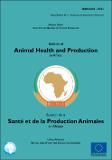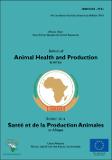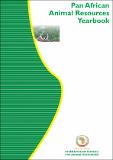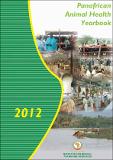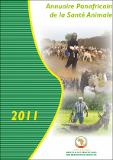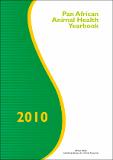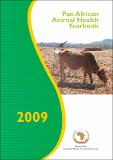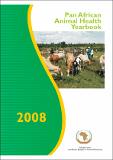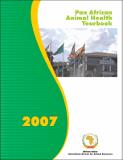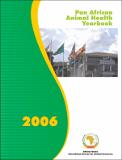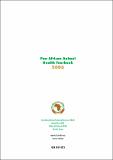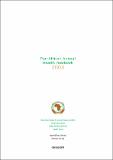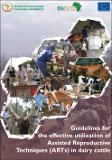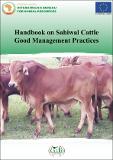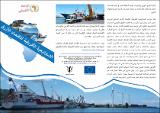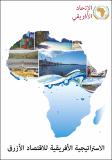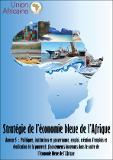AU-IBAR Repository: Recent submissions
Now showing items 621-640 of 1000
-
Bulletin of Animal Health and Production in Africa: Special Edition - Fisheries and Aquaculture Resources
(3/1/2016)This bulletin covers the following articles: Growth performance of nile tilapia and african catfish fed on rations formulated from locally available feed resources, Tanzania. Effet de l’âge au transfert en étang sur la ... -
Bulletin of Animal Health and Production in Africa: - Special Edition - African Animal Genetics Resources
(3/1/2015)This bulletin covers the following articles: A comparison of some anatomical characteristics of male and female reproductive organs of the white fulani and west african short horn cattle in Ghana: A short communication. ... -
African Youth in Livestock, Fisheries and Aquaculture Incubators Network (AYLFAIN) Newsletter: Issue 2
(2020)The second 2020 African Youth in Livestock, Fisheries and Aquaculture Incubators Network (AYLFAIN) Newsletter includes an in-depth interview with Divine Ntiokam, founder of the Climate Smart Agriculture Youth Network ... -
Pan African Animal Resources Yearbook 2015
(2015)The Pan-African Animal Resources Yearbook (PARYB) will continue to evolve with its resignation as to cover all areas of Animal Resources in Africa instead of only Animal Health related issues. Thus more data and information ... -
Pan African Animal Resources Yearbook 2014
(2014)The Pan-African Animal Resources Yearbook (PARYB) will continue to evolve with its resignation as to cover all areas of Animal Resources in Africa instead of only Animal Health related issues. Thus more data and information ... -
Pan African Animal Resources Yearbook 2013
(2013)The Pan-African Animal Resources Yearbook (PARYB) will continue to evolve with its resignation as to cover all areas of Animal Resources in Africa instead of only Animal Health related issues. Thus more data and information ... -
Pan African Animal Resources Yearbook 2012
(2012)The Pan-African Animal Resources Yearbook (PARYB) will continue to evolve with its resignation as to cover all areas of Animal Resources in Africa instead of only Animal Health related issues. Thus more data and information ... -
Pan African Animal Resources Yearbook 2011
(2011)The Pan-African Animal Resources Yearbook (PARYB) will continue to evolve with its resignation as to cover all areas of Animal Resources in Africa instead of only Animal Health related issues. Thus more data and information ... -
Pan African Animal Resources Yearbook 2010
(2010)The Pan-African Animal Resources Yearbook (PARYB) will continue to evolve with its resignation as to cover all areas of Animal Resources in Africa instead of only Animal Health related issues. Thus more data and information ... -
Pan African Animal Resources Yearbook 2009
(2009)The Pan-African Animal Resources Yearbook (PARYB) will continue to evolve with its resignation as to cover all areas of Animal Resources in Africa instead of only Animal Health related issues. Thus more data and information ... -
Pan African Animal Resources Yearbook 2008
(2008)The Pan-African Animal Resources Yearbook (PARYB) will continue to evolve with its resignation as to cover all areas of Animal Resources in Africa instead of only Animal Health related issues. Thus more data and information ... -
Pan African Animal Resources Yearbook 2007
(2007)The Pan-African Animal Resources Yearbook (PARYB) will continue to evolve with its resignation as to cover all areas of Animal Resources in Africa instead of only Animal Health related issues. Thus more data and information ... -
Pan African Animal Resources Yearbook 2006
(2006)The Pan-African Animal Resources Yearbook (PARYB) will continue to evolve with its resignation as to cover all areas of Animal Resources in Africa instead of only Animal Health related issues. Thus more data and information ... -
Pan African Animal Resources Yearbook 2005
(2005)The Pan-African Animal Resources Yearbook (PARYB) will continue to evolve with its resignation as to cover all areas of Animal Resources in Africa instead of only Animal Health related issues. Thus more data and information ... -
Pan African Animal Resources Yearbook 2003
(2003)The Pan-African Animal Resources Yearbook (PARYB) will continue to evolve with its resignation as to cover all areas of Animal Resources in Africa instead of only Animal Health related issues. Thus more data and information ... -
Guidelines for the effective utilization of Assisted Reproductive Techniques (ARTs) in dairy cattle
(2019)The manual provide basic information on the Assisted Reproductive Techniques (ARTs), along with illustrations. -
Handbook on Sahiwal Cattle Good Management Practices
(2019)This handbook on Sahiwal cattle management practices has been designed keeping the requirements of the farmers and extension agencies in mind. The handbook attempts to provide basic information on breeding, healthcare, ... -
-
-
Stratégie de l’économie bleue de l’AfriqueAnnexe 5 : Politiques, institutions et gouvernance, emploi, création d’emplois et éradication de la pauvreté, financements innovants dans le cadre de l’économie bleue de l’Afrique
(2019)Le document examine l’annexe 5 de la Stratégie pour l’économie bleue de l’Afrique axée sur les politiques, les institutions et la gouvernance, l’emploi, la création d’emplois et l’éradication de la pauvreté, le financement ...
